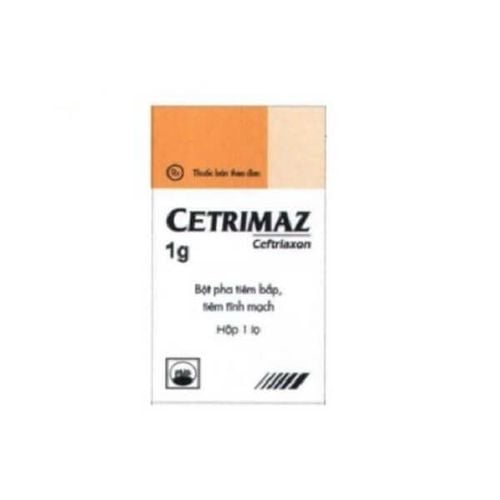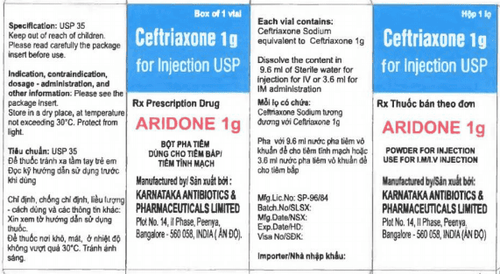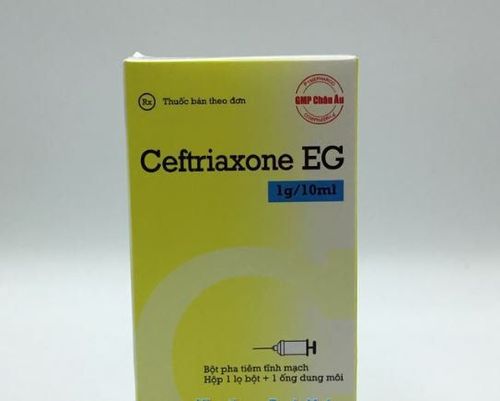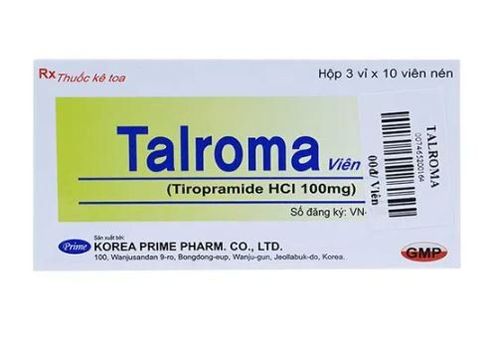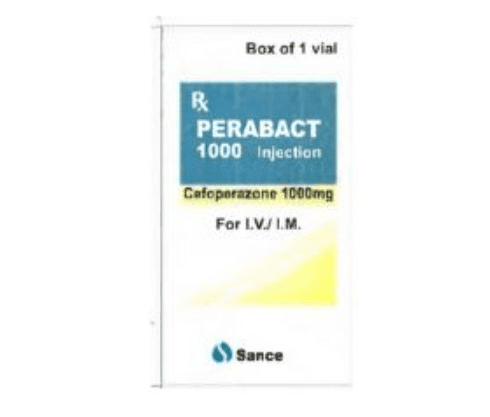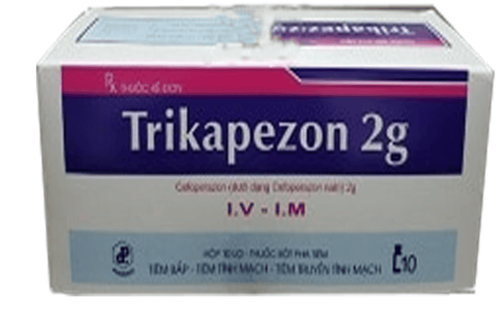This is an automatically translated article.
Azatyl is a drug belonging to the group of drugs that treat parasites, anti-infectives, antivirals and antifungals. Ceftriaxone is used to treat sepsis, meningitis, endocarditis, and brain abscess. In order to ensure the effectiveness of use, patients need to follow the instructions of their doctors, and can refer to more information about the uses of Azatyl in the following article.
1. What does Azatyl do?
1.1. What is azatyl? Azatyl is a drug belonging to the group of antiparasitic, antiviral, anti-infective and antifungal drugs. Azatyl medicine has the main ingredient is Ceftriaxone (as the drug Ceftriaxone sodium trisesquihydrate) 1000mg.
Azatyl is manufactured in Remedina S.A - Greece and registered by Capital Pharmaceutical Joint Stock Company.
The drug is prepared in powder form for intramuscular injection, intravenous injection, and packaged in boxes of 10 vials
1.2. What does Azatyl do? Indications:
Indications for use of Azatyl drug in cases:
Infections of the respiratory tract, ears, nose, throat, kidneys, genitourinary tract, blood infections and purulent meningitis. Prophylaxis of postoperative infections, infections of bones, joints, skin, wounds and soft tissues, peritonitis, cholangitis, cholecystitis and gastrointestinal infections. Contraindications:
Azatyl is contraindicated in patients with hypersensitivity to Ceftriaxone or Cephalosporins and Penicillins.
2. Usage of Azatyl
2.1. How to use Azatyl Drug Azatyl is used by mixing powder with solution for intramuscular and intravenous injection. Because this is a prescription drug, patients are not allowed to use it on their own.
2.2. Dosage of the drug Azatyl Adults and children over 12 years old: 1 to 2g, 1 time per day, in severe cases can increase to 4g / time / day. Children under 12 years old: 20 - 80mg/kg/time/day. Meningitis can be up to 100mg/kg/day but not more than 4g. Treatment when missed dose:
Azatyl is used as prescribed by the doctor, so it is very rare for patients to miss a dose. Treatment of overdose:
In cases of overdose with Azatyl, drug concentrations cannot be reduced by hemodialysis or peritoneal dialysis. Currently, there is no specific antidote, mainly treating the symptoms.
3. Notes when using Azatyl
Before treatment with Ceftriaxone, it is necessary to carefully investigate the patient's history of allergy to cephalosporins, penicillins or other drugs. In patients allergic to penicillin, there is a high risk of cross-allergic reactions. For patients with conditions such as renal failure, caution must be exercised when considering the dosage. In patients with impaired renal and hepatic function, the dose of ceftriaxone should not exceed 2g/day. Since Ceftriaxone can complex with calcium causing precipitation, infusion of calcium-containing solutions should be avoided within 48 hours of ceftriaxone injection in all patients. Caution should be exercised during treatment beyond 14 days, when dehydration is due to the risk of ceftriaxone precipitation in the gallbladder. The cause of anemia must be found during treatment. If the cause is medication, it must be stopped immediately. Clinical experience in the treatment of pregnant women is limited. Research data shows that in animals, there is no toxicity to the fetus. Patients should only take Azatyl when prescribed by a doctor. Azatyl is excreted in milk in low concentrations. Therefore, caution should be exercised when taking the drug while breastfeeding.
4. Side effects of the drug Azatyl
In general, Azatyl is well tolerated. About 8% of patients treated had side effects, the frequency of which depended on the dose and duration of treatment. Some of the side effects that may be encountered when taking Azatyl include:
Common, ADR > 1/100: Diarrhea, skin reactions, rash and itching.
Uncommon, 1/100 > ADR > 1/1000: Fever, phlebitis, edema, leukopenia, thrombocytopenia and eosinophilia and urticaria.
Rarely, ADR < 1/1000:
Systemic: Headache or dizziness and anaphylaxis. Blood: Anemia and coagulation disorders, agranulocytosis. Gastrointestinal: Pseudomembranous colitis. Skin: Erythema multiforme. Urogenital - Genitourinary: Blood in urine or increase in serum creatinine. Transient elevation of liver enzymes during treatment with Azatyl. Azatyl can separate bilirubin from serum albumin, increasing the concentration of free bilirubin and threatening CNS toxicity. Azatyl produces a positive Coombs reaction and no hemolysis, which in blood galactose and urine glucose tests may be falsely positive for ceftriaxone. Long-term use of high doses of Azatyl can be seen on ultrasound as a pseudo-gallstone image due to calcium salt deposition. This image disappears when the patient stops taking the drug. If you experience these symptoms, the patient should stop using Azatyl and notify the doctor for appropriate treatment.
5. Azatyl drug interactions
Azatyl may interact with:
Chloramphenicol; Gentamicin, Colistin and Furosemide. Calcium salts (infusion) and Ringer lactate injection solutions. Antagonists such as vitamin K. Agents causing uric aciduria. Typhoid vaccine. Incompatibility:
Azatyl should not be mixed with other antibacterial solutions. Azatyl must never be mixed with solutions containing calcium and must not be mixed with amsacrine, aminoglycosides, fluconazole or vancomycin.
6. How to store Azatyl
Azatyl is available as a sterile powder that is stored at temperatures below 25°C and protected from direct light. Freshly prepared solution should be used. The stability of the solution depends on the drug concentration, the diluent, or the storage temperature. The solution for intramuscular injection is stable for 1 day at room temperature 25oC and 3 days, if refrigerated at 4oC. The solution for intravenous injection is stable for 3 days at room temperature about 25oC and 10 days in the refrigerator at 4oC. Above is all information about Azatyl drug, patients need to carefully read the instructions for use, consult a doctor / pharmacist before using. Absolutely do not arbitrarily buy Azatyl home treatment because it may encounter unwanted side effects.




